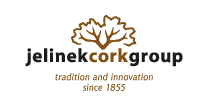There are many definitions of sustainability, with two of the more common definitions highlighting best what sustainability means.
The United Nations defined sustainability in 1987 as: " Meeting the needs of the present without compromising the ability of future generations to meet their own needs. "
Expanding on the UN definition, UCLA would later describe sustainability as: " The integration of environmental, health, social equity, and economic vitality in order to create thriving, healthy, diverse, and resilient communities for this generation and generations to come. "
Cork is an excellent example of sustainability under both of these definitions. Cork bark comprises three layers; the outermost and middle layers are harvested numerous times over the tree's life, regrowing following each harvest. Because the inner layer is not removed, the tree's protective layer is preserved, allowing the tree to continue to thrive. In contrast, trees with only a single layer of bark would not survive being harvested.
The cork forest (called Montados in Portugal) is one of the 36 biodiversity hotspots in the world, as recognized by the Critical Ecosystem Partnership Fund. These biodiversity hotspots represent the most biodiverse ecosystems on earth that are critical to the long-term success of our planet. Cork trees are a keystone species in the cork forest, integral to the ecosystem's overall survival. Cork trees have expansive root systems that help to retain moisture in the soil and prevent topsoil loss due to erosion. The cork tree also thrives in poor soil while depositing essential nutrients back into the soil through its roots and decomposing leaves. In addition, the vast and expansive branches of the cork oak tree provide needed shade and respite for a variety of animals in an otherwise arid climate. Annually, the world's cork forests sequester 14 million tons of carbon dioxide as one of the world's most efficient carbon scrubbers.
Cattle grazing in a Montados (Cork Forest) in Portugal
The cork harvest is an entirely sustainable process - both environmentally and socially - completed by the expert hands of agricultural artisans who have passed down the delicate craft from generation to generation. Cork harvesters are among the best-paid agricultural workers in the world, and for good reason. The process is delicate, and the workers are careful not to damage the tree. After a cork tree's outer two layers of bark are harvested, the tree will absorb 3-5 times more carbon dioxide than it did prior to the harvest. Each tree can be harvested roughly every 9 years from the first harvest for the remainder of the tree’s life.
Cork bark is stacked in the sun for drying after a harvest.
After the harvest, the processing of the cork bark into goods is kept sustainable by a whole bark approach, which means that every part of the harvested cork bark, even waste bark, and dust that comes off the bark during processing, is used. Cork factories are powered by the burning of cork dust rather than by fossil fuels, coal, or other non-sustainable energy. This focus allows the cork to remain not just a carbon-neutral product but actually absorb more carbon dioxide than is produced in the processing, manufacturing, and shipping of the finished cork products. Cork products also allow the world to shift away from a plastic dependency by replacing plastic wine corks, laminate flooring, foam insulation, and more.


